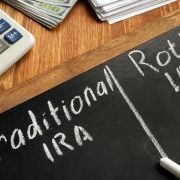Understanding Self-Directed Roth IRA Eligibility
A Self-Directed Roth IRA can be one of the most powerful tools for retirement. Why? Because it allows investors to use after-tax money within a retirement account. This simple fact means that investors can then let their money grow tax-free, as long as they meet certain conditions. In fact, investors can even withdraw their contributions (but not the growth) before retirement age, tax-free. After all, the taxes have already been paid.
In fact, the Roth IRA is such a powerful investment vehicle that many investors are asking questions about it. But most important off the bat is this: who qualifies for a Self-Directed Roth IRA, and what are the eligibility requirements?
Eligibility Requirements for a Self-Directed Roth IRA
To understand the basics of this account type, we have to explore its role. Let us break it down into the specific requirements you have to meet before contributing to a Roth IRA.
The first thing to understand is the concept of earned income. Since the Roth IRA uses after-tax money, an investor can only use earned income to contribute to it. That means that if your money comes from other forms of income—or if you had no income to report in a certain year—there is no way for you to put “after-tax” money into the Roth IRA. After all, it cannot be “after-tax” if there was never income that was taxed in the first place.
Earned income typically works in two ways. 1) You might work for someone else that pays you, such as commissions or salary. 2) You must earn your own income, such as by running your own business, or even a farm.
Types of earned income that would not qualify for contributions into a Roth IRA are: Nontaxable Alimony, Child support, and/or unemployment benefits. Social security retirement benefits, too, would not count as “earned” income, even if you put a lot of money into social security over the years.
This is the chief eligibility requirement of the Roth IRA. At least for all practical purposes. But some people might run into the Roth IRA income limits that kick in once you have made a certain amount of money. To understand this, you can refer to the IRS website, which details some of the following examples for 2021:
If you’re single or married, filing separately, you will start to see reductions in your contribution amounts at the $125,000 per year mark, as determined by your modified AGI, or modified adjusted gross income. At $140,000, you aren’t able to contribute any of this.
The Advantages of a Self-Directed Roth IRA
What does this have to do with self-direction? A Self-Directed Roth IRA has the same rules as any other Roth IRA, which includes eligibility rules listed above. However, self-direction is how you choose to manage this account. With a Self-Directed retirement account, you can make a wide range of investments. However, that does not mean you can use your Roth IRA as you see fit. You will still be subject to specific retirement rules, such as the inability to use real estate within your retirement account for personal living situations.
Because the Roth IRA is a powerful vehicle for tax protection as you save for retirement, many people look into these eligibility rules to understand how they can get started—or even whether they can get started. It is important to understand these rules before getting things kicked off. For more information, you should consult a tax professional as to the best retirement accounts for your specific situation.
Interested in learning more about Self-Directed IRAs? Contact American IRA, LLC at 866-7500-IRA (472) for a free consultation. Download our free guides or visit us online at www.AmericanIRA.com.










